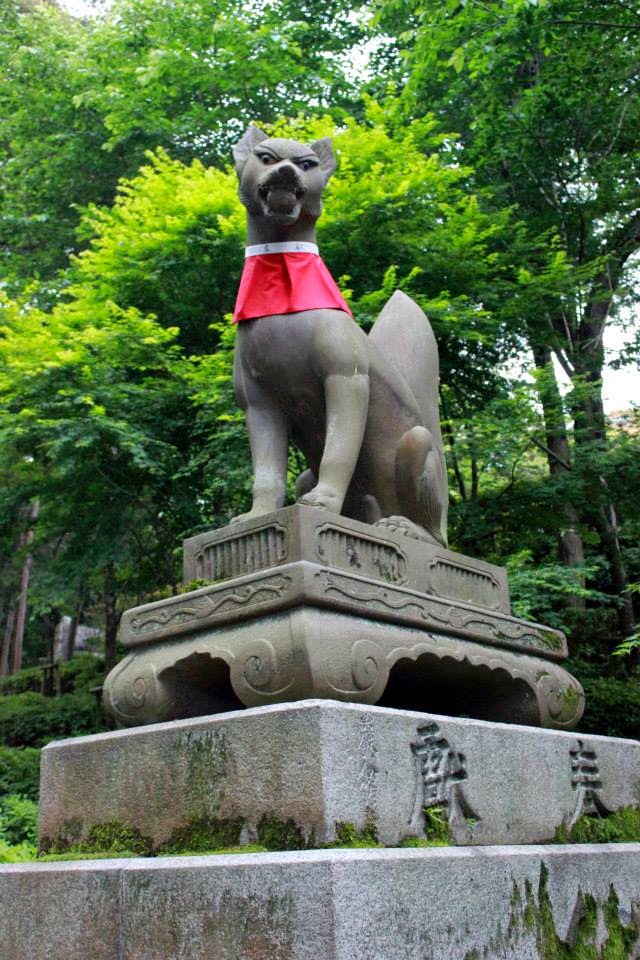Inari Okami is the Shinto Kami, or spirit, which represents foxes, fertility, agriculture and industry but also general prosperity and wealth. Being the most significant place of worship of this Kami, this Imperial shrine was founded during the Heian Period in 711 and received a boon under Emperor Murakami in 965. While this has been the shrine site since 816, the main shrine structure pictured above was not built until 1499.
This is right about where my toddler had the most epic, traffic-stopping, temper tantrum of all time. She wanted to play with the gravel anchoring the torii gates... I'll never forget that one!
Foxes, or kitsune, are the animal spirit are often found in Inari shrines. There are foxes all about the shrine grounds. You can even take a cuddly stuffed fox home with you from the gift shop! Many of the foxes are holding keys to the rice granary or rice fronds. Real rice is also often tied to the foxes' necks.
Handwashing station

I loved these lanterns and the grounds in general
This woman was nice enough to let me take her photo; I thought her kimono was just beautiful. I see kimonos very often here in Japan (especially since we don't live right in Tokyo which I find more Westernized in a lot of respects), but the fabric of her kimono really caught my eye.
all photos above by me and please credit if you share, thanks!
The shrine famously inspired the NYC Gates (which I well remember but failed to fully understand at the time) from 2005 by Bulgarian artist Christo Yavacheff and French artist Jeanne-Claude.













Hello Ann, It is interesting to compare the Japanese shrines with Chinese ones. Some details, such as the painted flowers resting on the beam, could be anywhere, but on the other hand I don't recall seeing readily identifiable foxes in Chinese art.
I am wondering how far apart the supports are in the sequence of torii gates--could a person go through the gap?
--Jim
Beautiful!
Post a Comment